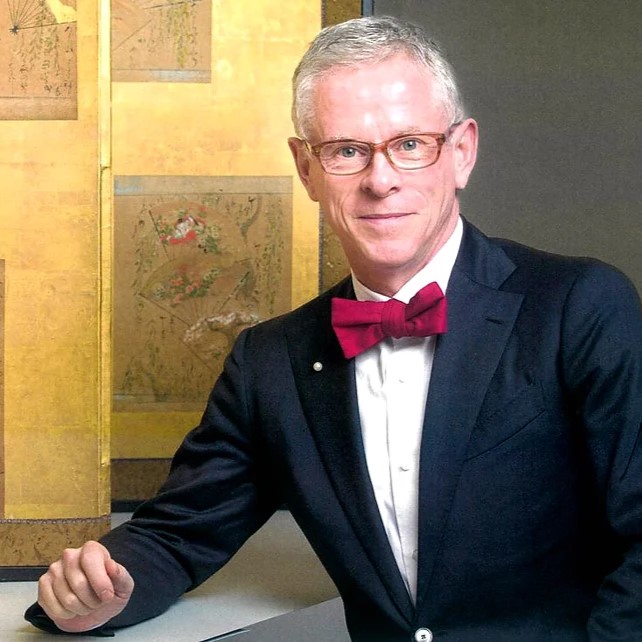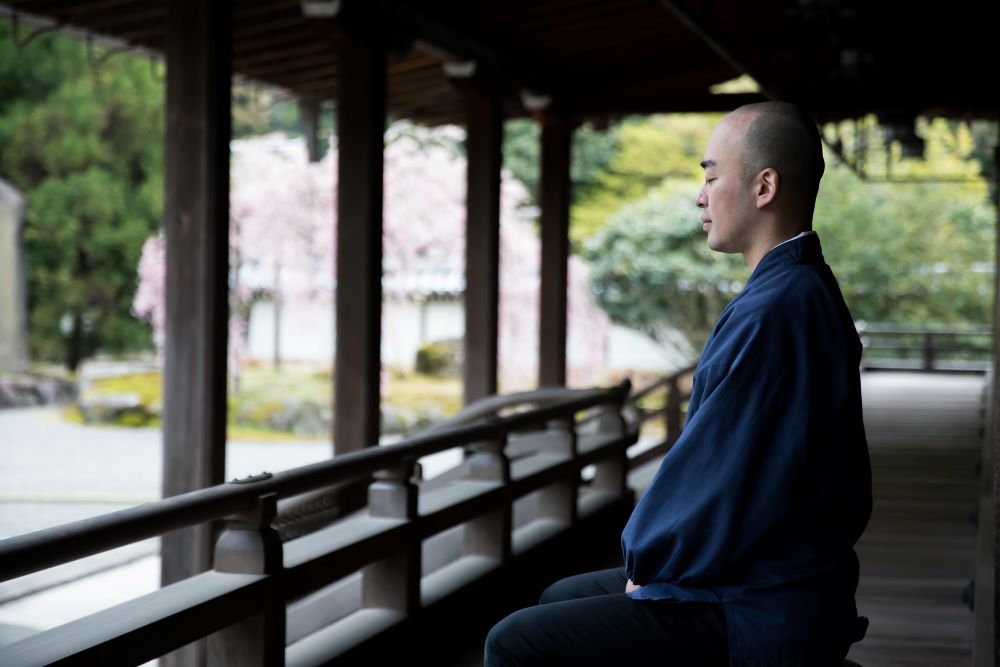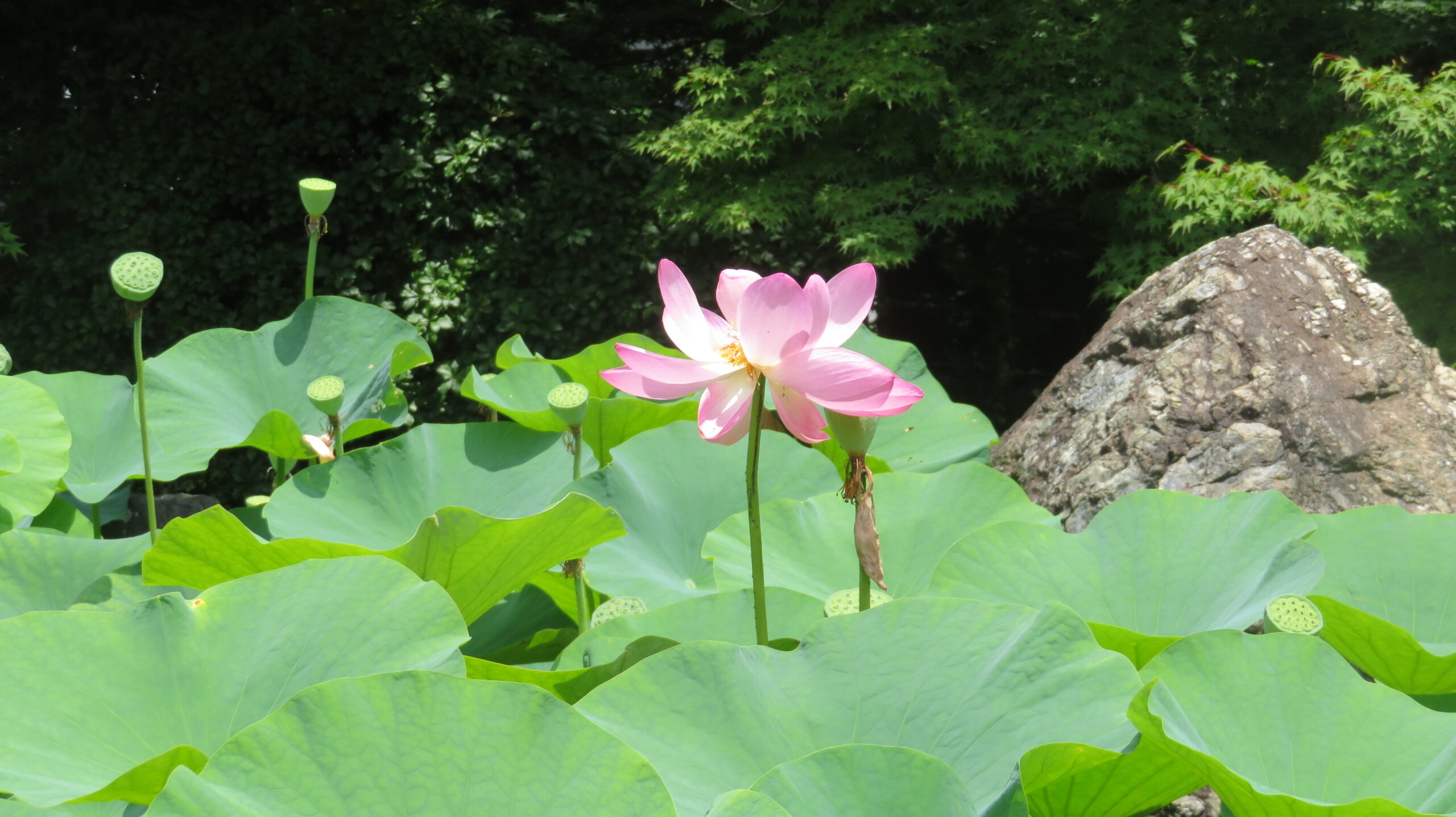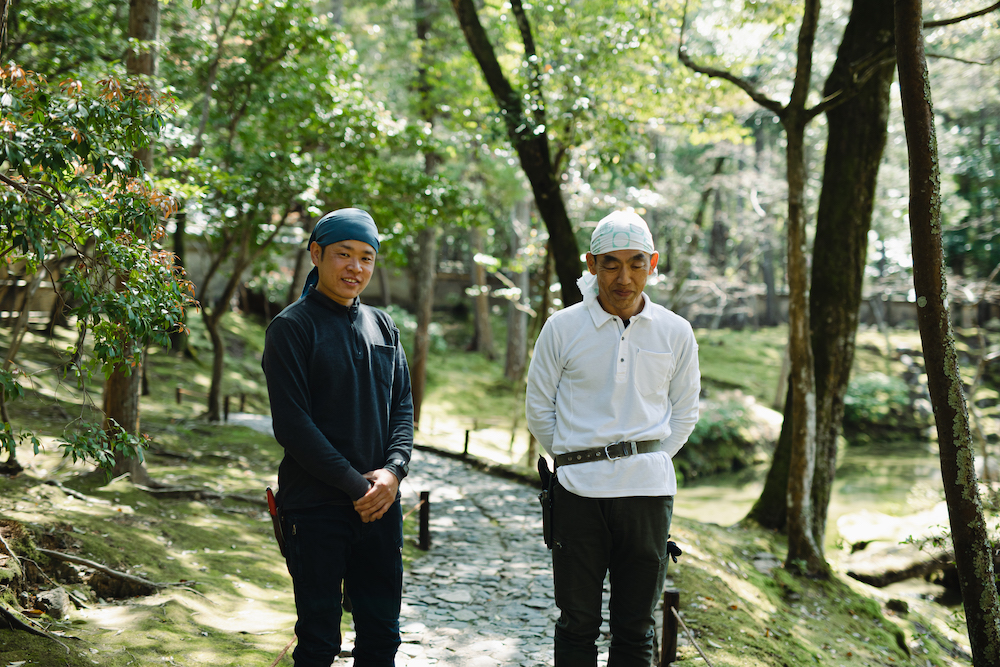2024.9.20
Winds of Gold—One Hundred Views of Saihoji Vol. 5
Peter MacMillan / a translator, scholar, poet
In this series of essays on Saihoji the renowned translator of Japanese poetry and poet Peter MacMillan records his impressions of and reflections on his visits to the garden throughout the four seasons. We hope that through these essays you the readers and fans of Saihoji can feel as if you are also present in the magical garden even when you cannot visit us.
When the Crepe Myrtle Blossoms
Every time I go to Saihoji I feel a sudden rush of joy and as if endless possibilities may unfold before me. The moment I enter the garden I am like a little bird set from a cage into a beautiful untrammeled paradise. But when I start to walk around the garden it is difficult to maintain that feeling. I come to see the garden around once a month, so sometimes I wonder if there is anything new that I can write about. I get agitated and worry that if I do not make new discoveries and thus disappoint my readers.
Then I start to remember previous visits or think of things in the outside world, thoughts of work and other random thoughts. And I often recall how moved I was the first time I visited the garden over thirty years ago and try to return to that feeling of experiencing the beauty and mystery of the garden for the first time. Whenever I visit the garden, I realized that I also experience the sense of finite limitations in my life: the time remaining to me on the earth, the limits of my abilities, my inability to live within the moment, my lack of a Zen training, etc, So I could say that at Saihoji I feel both endless possibility and the limitations of my daily life at the same time.

On my visit today, it is the season when the crape myrtle is blossoming, and a flash of red contrasts with the lovely green mosses of Saihoji. The ringing noises of the cicada fill the garden with a resounding chorus, and little black tadpoles are swimming around the bottom of the pond. The heat is intense everywhere today, but in the garden, there are many long shadows and somehow it feels a little cooler. I am seeing everything through a thunderous sound—the chorus of minng minng minng of the cicada, and they remind me of the famous haiku by Matsuo Basho.
閑さや岩にしみ入る蝉の声
In the great silence,
permeating the rock—
the humming cry of cicadas.
But at Saihoji the sounds are not disappearing into rocks but absorbed gently into the moss.
In a green silence,
the ringing cries of cicadas
ingested by moss.
Then in remembering this haiku and creating a new one based on the original one, I realized that I have overcome my feeling of anxiety and had a new and unique experience this time in the garden. This is the goal of every visit to Saihoji, and to achieve it, I realized this time that if I become more conscious of my anxieties and limitations, it will be easier for me to overcome them. And I hope my reflections will be helpful for the readers too as you face your own struggles and seek ways to overcome them in your life. The first step in liberation is to become aware of what one is suffering from and in that sense Saihoji is my great teacher.
Peter MacMillan
Peter MacMillan is a prize-winning translator, scholar, poet, and President of The Moon is a Boat Co., Ltd.
His translation, One Hundred Poets, One Poem Each (Hyakunin Isshu), was published in 2008, winning prizes in both Japan and the United States. After that, he completed an English translation of The Tales of Ise (Ise Monogatari), which was published by Penguin in 2016. He has also published a collection of poetry entitled Admiring Fields.
Awards:
Recipient of the Donald Keene Center Special Prize for the Translation of Japanese Literature
Recipient of the 44th Special Cultural Translation Prize from the Japan Society of Translators
Nominated for the PEN Award for Poetry Translation for the English translation of The Tale of Ise (Ise no Monogatari)

Up next
Most read

Your Heart
“The Concept of Muda”





